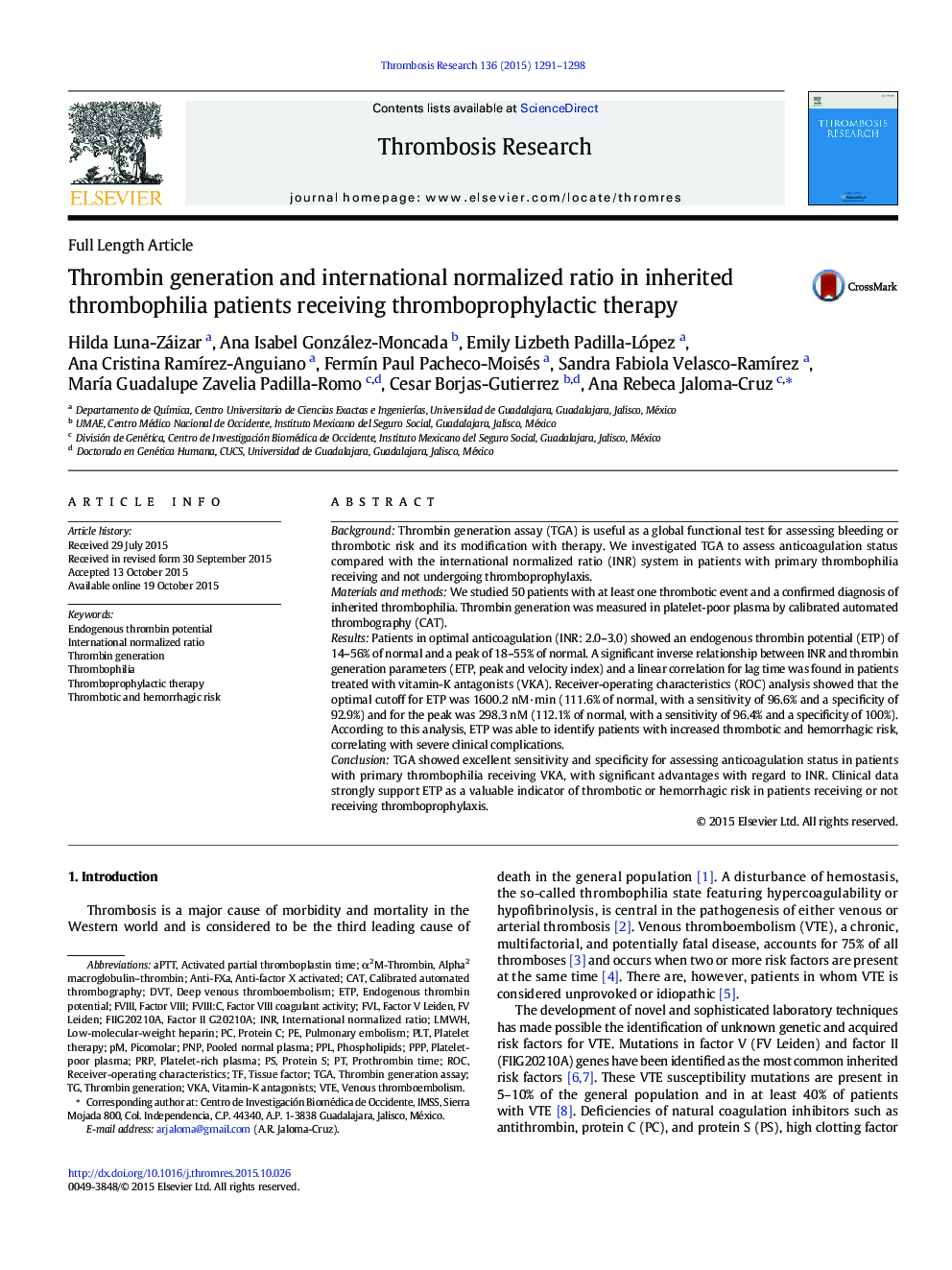| کد مقاله | کد نشریه | سال انتشار | مقاله انگلیسی | نسخه تمام متن |
|---|---|---|---|---|
| 6001055 | 1182942 | 2015 | 8 صفحه PDF | دانلود رایگان |
- Patients in optimal anticoagulation showed ETP of 14-56% and peak of 11-56% of normal.
- Inverse, nonlinear relationship between ETP, peak and vel. index vs. INR in VKA patients (PÂ <Â 0.001)
- The ROC analysis strongly supports ETP as a valuable indicator of thrombotic or hemorrhagic risk.
- TGA was better than INR for assessing anticoagulation status in VKA patients.
ABSTRACTBackgroundThrombin generation assay (TGA) is useful as a global functional test for assessing bleeding or thrombotic risk and its modification with therapy. We investigated TGA to assess anticoagulation status compared with the international normalized ratio (INR) system in patients with primary thrombophilia receiving and not undergoing thromboprophylaxis.Materials and methodsWe studied 50 patients with at least one thrombotic event and a confirmed diagnosis of inherited thrombophilia. Thrombin generation was measured in platelet-poor plasma by calibrated automated thrombography (CAT).ResultsPatients in optimal anticoagulation (INR: 2.0-3.0) showed an endogenous thrombin potential (ETP) of 14-56% of normal and a peak of 18-55% of normal. A significant inverse relationship between INR and thrombin generation parameters (ETP, peak and velocity index) and a linear correlation for lag time was found in patients treated with vitamin-K antagonists (VKA). Receiver-operating characteristics (ROC) analysis showed that the optimal cutoff for ETP was 1600.2 nM·min (111.6% of normal, with a sensitivity of 96.6% and a specificity of 92.9%) and for the peak was 298.3 nM (112.1% of normal, with a sensitivity of 96.4% and a specificity of 100%). According to this analysis, ETP was able to identify patients with increased thrombotic and hemorrhagic risk, correlating with severe clinical complications.ConclusionTGA showed excellent sensitivity and specificity for assessing anticoagulation status in patients with primary thrombophilia receiving VKA, with significant advantages with regard to INR. Clinical data strongly support ETP as a valuable indicator of thrombotic or hemorrhagic risk in patients receiving or not receiving thromboprophylaxis.
186
Journal: Thrombosis Research - Volume 136, Issue 6, December 2015, Pages 1291-1298
